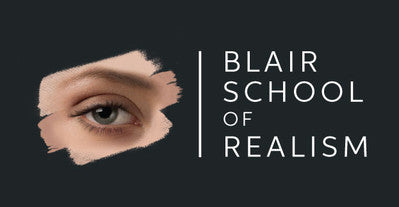Getting your image onto the painting surface
Once you have your image, you will need to find a way to transfer it, or part of it, onto the surface of your painting to guide your shapes. I usually use a mechanical pencil, and draw the outlines and boundaries. To represent soft or blurry edges, I will often use dotted lines. You may decide to erase your pencil marks if there is a risk that they will remain visible under light transparent colors. Here are several options:
1. Draw the image freehand. This is the classical method and requires some drawing skills. Many people overlook this skill, but it is valuable in discerning shapes and ratios in painting too.
2. Trace the image. This involves having a translucent surface so that you can see the source image beneath. Major lines and shapes are traced in order to reproduce the proportions of the source image. The downside is that this requires a transparent or translucent working surface.
3. Project the image. There are a variety of projectors on the market that project opaque images and transparent slides onto the drawing surface. The downside is that these usually require a very dark room, and the image can suffer from lens distortions.
4. Grid. The grid system is a classic method for reproducing or enlarging an image. An evenly spaced grid is drawn over both the source image, and the painting surface, then the individual grid boxes of the source image are reproduced in the grid of the painting surface. This system works especially well for mural work, and does not require the reference image to be the same size as the final painting.
5. Transfer paper. Here, the artist places a piece of paper containing graphite or other materials face down on the painting surface, and beneath the source image. A pencil or pointed object is used to trace the shapes on the reference image, and the pressure transfers the graphite or material onto the painting surface. The most popular transfer paper is Saral paper, which is available in different sizes and colors.
6. Make a stencil. A stencil can be made of different materials. I currently use a laser cutter, but before that, I would make a photocopy of my reference and cut out shapes with a hobby knife. There is also a wide variety of pre-made stencils. However, they may not align with your reference image.
7. Thr Flip method. With this method, the reference is laid on top of the painting, and lifted up and placed back down rapidly in order to compare the painting with reference. I stumbled across this method in the early 2000’s, when I was demonstrating proportional problems to a student by laying the reference right on top of their painting and flipping it back and forth rapidly to identify problem areas. This helped the student understand where the adjustments needed to be made, so I incorporated it into later curriculum. We had no name for it, so I called it the flip method.
It reminded me of how I made little animated flip books as a child, and is similar to the method professional cell animators work. The only difference is that I don’t want my painting to “animate” or move. I want the shapes in my painting or drawing to remain perfectly still when I flip the reference back and forth.




